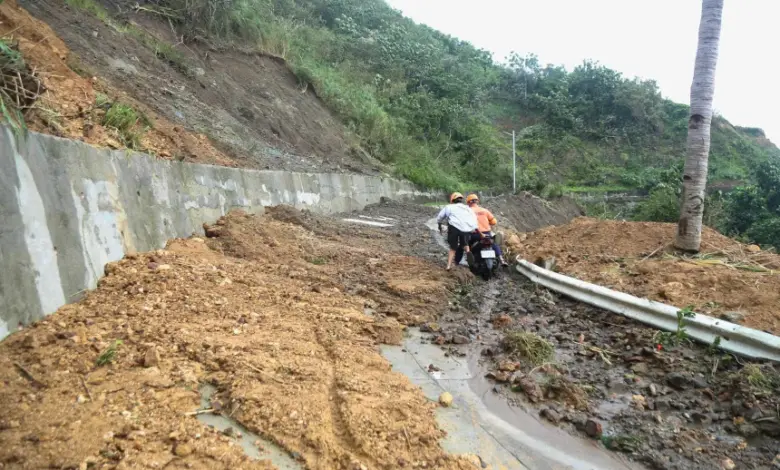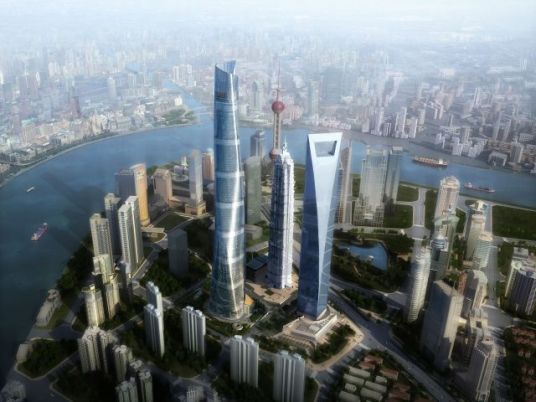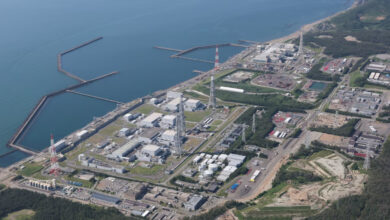
Nearly two million people have been relocated from southern Chinese megacities as a powerful typhoon hurtles into one of the world’s most densely populated coasts, after unleashing deadly flooding in Taiwan – where more than 100 people are listed as missing.
Typhoon Ragasa, which a few days ago was the strongest storm on earth so far this year, brought finance hub Hong Kong and swathes of southern China to a standstill on Wednesday, after barreling through remote islands in the Philippines and mountainous regions of Taiwan.
Packing hurricane-force winds, it has left a trail of damage, triggering landslides and huge waves, and is now bearing down on China’s Guangdong province, where massive cities like Shenzhen and Guangzhou are located.
In Taiwan, at least 14 people died and rescuers are scrambling to locate 129 others still listed as missing after a natural dam holding back a recently formed lake collapsed, unleashing 68 million tons of water and flooding the nearby Guangfu township.
Videos from the town, in the mountainous eastern Hualien County, show a torrent of water rushing through the streets, with cars swept away and residents sheltering on higher floors as the lower levels of their homes become inundated.
Debris from a landslide in July had formed the natural dam, and authorities had been warning for weeks the remote lake could overflow by October. At a news conference on Wednesday, officials said assessments showed it wasn’t feasible to dredge, siphon or otherwise remove the dam barrier – so they opted to monitor the situation instead.
Before the typhoon hit, authorities said they had issued multiple warnings and evacuation advisories to residents who could be impacted if the lake overflowed.
But their October prediction didn’t take heavy rainfall into account – and any strong typhoons could have sped up that process, said Kuo-Lung Wang, a professor at Taiwan’s National Chi Nan University.
A large bridge in Hualien was also washed away by the rush of water following the collapse of the natural dam.
Southern China battered
The Philippines, Taiwan and southern China experience multiple typhoons annually, but the human-caused climate crisis has made storms more unpredictable and extreme.
As the storm approached the international finance hub of Hong Kong early Wednesday, it brought lashing winds that felled trees and ripped scaffolding off buildings, reaching maximum gusts of 168 kilometers per hour (104.39 mph). One CNN reporter on the ground saw sea swells pounding the sidewalk near Hong Kong’s iconic harbor.
Video circulating on social media showed storm surges shattering the glass doors of the Fullerton Ocean Park Hotel, a luxury seaside resort, with huge waves gushing into the lobby and sweeping people off their feet.
In a statement to CNN, the hotel said no injuries were reported and that the government had “immediately” mobilized resources to respond.
The winds have prompted Hong Kong and Macau – together home to more than 8 million people – to issue their highest hurricane warning signal, with schools, businesses and public transit largely closed, including the city’s airport, one of the Asia’s busiest. Storm surges could reach up to four meters in some areas on Wednesday, warned the Hong Kong Observatory.
Other cities along the southern coast of China were bracing for impact, too, with authorities triggering measures to protect those most at risk from storm surges and landslides.
The country’s southern Guangdong province evacuated 1.89 million people by Tuesday night ahead of the typhoon’s arrival, according to the provincial emergency management department.
More than 10,000 vessels in Guangdong were relocated to safer waters to avoid the storm, and more than 38,000 firefighters are on standby, according to state-run outlet Xinhua.
Footage from Shenzhen, just across the border from Hong Kong, showed massive waves crashing into a coastal park Tuesday night, with winds reaching 181.44 kilometers per hour (112.4 mph).
Strong track record of preparing for typhoons
Though this region is highly populated, with tens of millions potentially impacted by the typhoon, it’s also well-prepared.
These cities are frequently in storm paths and have developed sophisticated infrastructure to combat weather-related dangers – including a vast $3.8 billion drainage network that has saved Hong Kong from floods that decades ago routinely cost lives and caused widespread destruction.
This year has been particularly stormy. Hong Kong typically experiences about six typhoons annually, but Ragasa marks the ninth typhoon so far this year, according to the City University of Hong Kong.
When the storm, also known as Typhoon Nando, first made landfall in the northern Philippines, it had been the equivalent of a Category 5 hurricane – so huge it sheer size could be easily seen from space, with images showing the eye of the storm amid a gigantic cloud of white.
It has since weakened slightly – but another storm called Opong is now intensifying in the Philippines in the aftermath of Ragasa and the typhoon season still has many months left.
So far four deaths have been reported in the Philippines, which are still being verified, according to the state-run Philippine News Agency.




